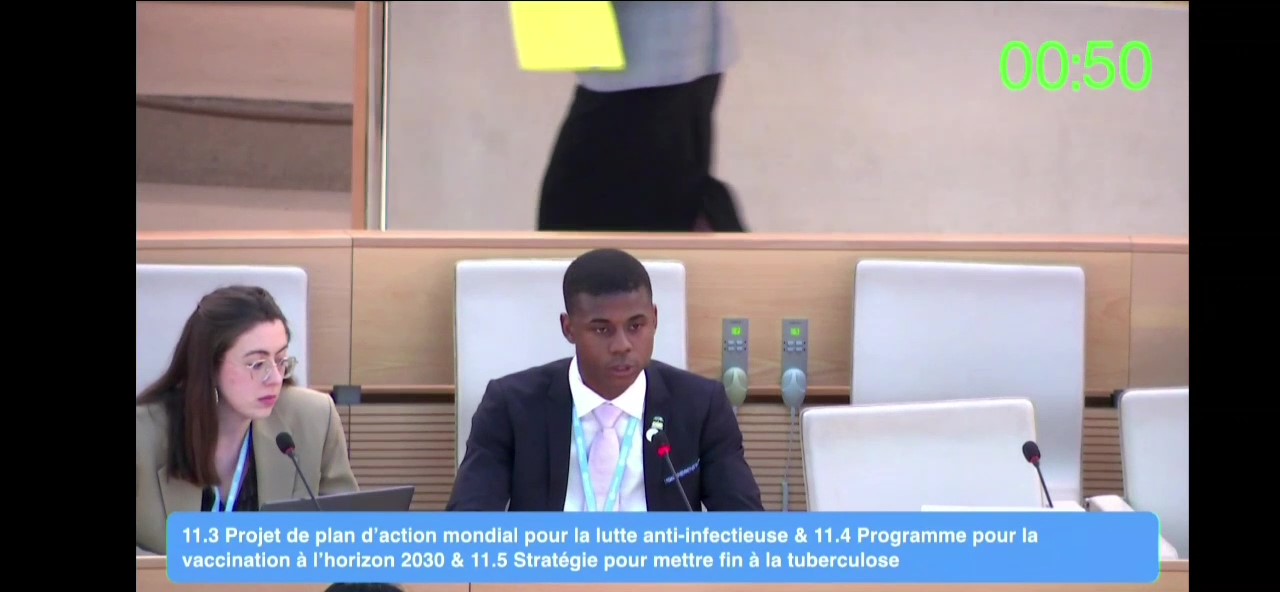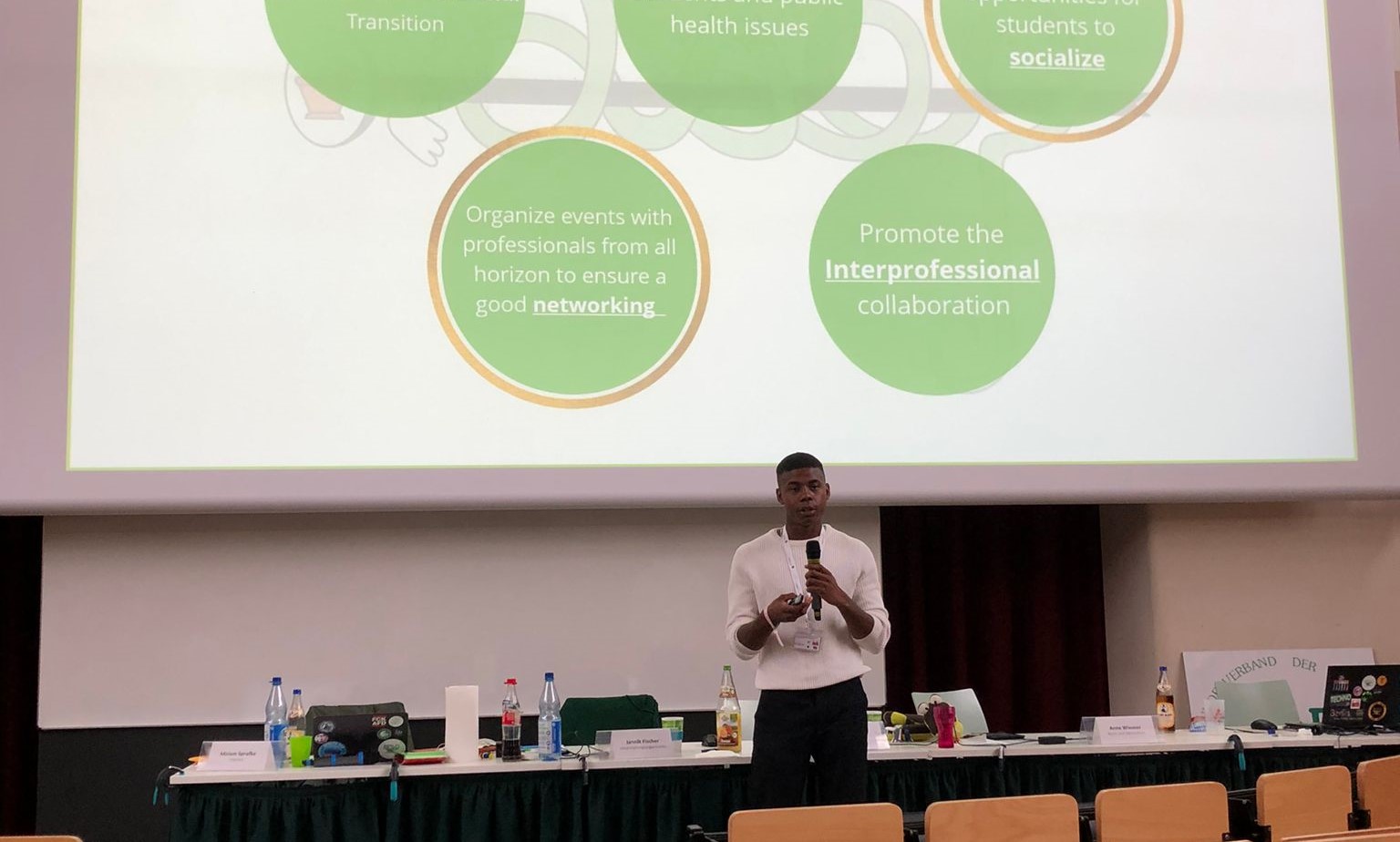
Outreach activities
May 2024 | IPSF Delegate to the 77th World Health Assembly of the WHO
- Represented IPSF, an organisation in official relations with WHO, advocating for over 500,000 pharmacy students and recent graduates at the World Health Assembly in Geneva.
- Delivered a statement, during the assembly, on the Immunization Agenda 2030.
- Engaged with NGOs, policymakers, and Member State delegates to foster collaborations tackling global health challenges such as, including Universal Health Coverage (UHC), antimicrobial resistance (AMR), non-communicable diseases (NCDs), pandemic preparedness, tuberculosis elimination and maternal, newborn and child health (MNCH).

Aug 2022 | Vice-Chairperson of the 4th IPSF EuRO Symposium
Appointed Vice-Chairperson in a team of 20 motivated student to organize a educative event gathering students from all over Europe. All of this with the appreciated support of the city of Bern, the Swiss U Change Fund and private sponsors.
Mai 2022 | Guest Speaker at 132. BVT - Leipzig
I participated in the national weekend of the BPhD (German Association of Pharmacy Students), where I spoke about the possibilities of student engagement at European and global level.

Mai 2022 | Delegate at the Geneva Health Forum 2022
I was at the Fight the Fake Alliance’s Booth speaking about the challenges and issues associated with substandard and falsified medicines. I also had the opportunity to participate in various sessions and have enriching exchanges.
Jan 2022 | Head of Public Relations - asep
I was elected to the board of asep (Swiss Association of Pharmacy Students), responsible for a team aiming to maintain a good image of the association and to develop the association’s relations with external stakeholders.
Oct 2021 | Delegate at the 43rd EPSA Annual Congress - Lyon
I attended the congress of EPSA (European Pharmacy Student’s Association) as an Offical Delegate to vote, debate and speak on behalf of the Swiss students
Oct 2021 | Guest Speaker at PsyKo 2021 - Leysins
At the Swiss national psychology student’s congress, I held a presentation on depressive disorders, with the perspective of pharmacy students, discussing pre-clinical research concepts and suggesting on the potential role of collaboration between pharmacists and psychologists
Aug 2021 | Delegate at the 66th IPSF World Congress - Seoul
I Attended the congress as an Offical Delegate to vote, debate and speak on behalf of the Swiss students
Feb 2021 | Co-Host of the Digital Health Panel Discussion
Co-organised and moderated a panel involving committed speakers from pharmacy, start-ups and academia to present their work related to digital health and answer students’ questions.
Jan 2021 | Contact Person to IPSF
Elected by asep to represent the Swiss students in the International Pharmaceutical Student’s Federation (IPSF), which is the umbrella organisation for pharmacy student’s association representing more than 500,000 students from over 100 countries worldwide. IPSF collaborates with many organisations such as WHO, UN, FIP, IFPMA and national stakeholders. I have supported student interests on topics such as education, the pharmacists’ evolving profession and Global Health.